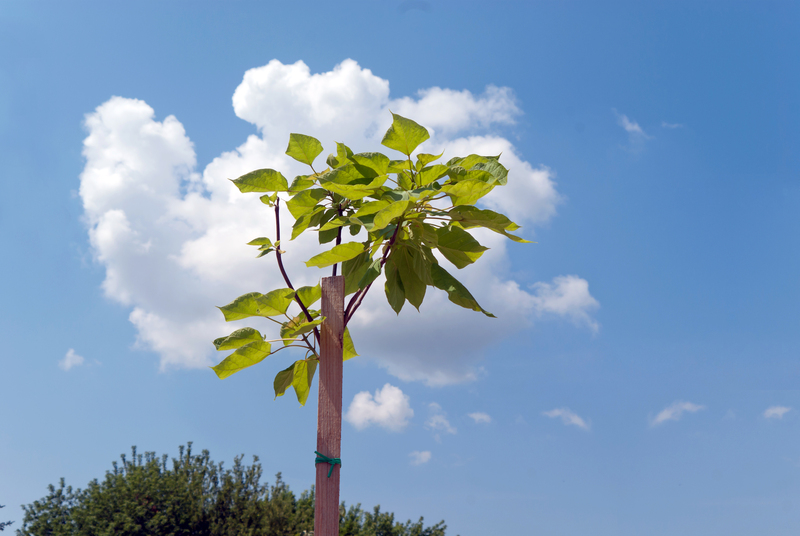Conquer Your Garden Foes: Three Proven Weed Control Techniques
Posted on 15/09/2025
Conquer Your Garden Foes: Three Proven Weed Control Techniques
Every passionate gardener knows the relentless challenge of weeds in the garden. These persistent intruders snatch sunlight, water, and nutrients away from your cherished plants, risking the health, beauty, and productivity of your green space. Fortunately, you don't have to surrender! With effective weed management strategies, you can outsmart these garden foes and reclaim your blossoming sanctuary. This comprehensive guide will show you three proven weed control techniques--so you can enjoy a lush, thriving, and weed-free landscape.
Understanding the Enemy: What Are Weeds and Why Do They Matter?
Before diving into the top weed control methods, it's crucial to understand: what exactly are weeds? Weeds are simply unwanted plants growing where they are not intended. They compete with your vegetables, herbs, flowers, and shrubs, often growing more aggressively and multiplying rapidly.
- They steal resources: Weeds use up water, sunlight, and soil nutrients, depriving your intended plants.
- They can harbor pests and diseases: Many weeds provide shelter for insects and can serve as hosts for plant diseases.
- They affect garden aesthetics: A garden choked with weeds loses its beauty and carefully planned design.
By prioritizing garden weed control, you foster healthier soils, more bountiful harvests, and a more pleasing outdoor space.

The Top Three Weed Control Techniques
Ready to conquer your garden foes? Here are three time-tested weed management solutions that work for gardeners of all skill levels and garden sizes. Learn how to put them into practice and customize these weed reduction strategies to suit your landscape and personal gardening philosophy.
1. Mulching: Nature's Protective Blanket
Mulching is a cornerstone of organic weed prevention and offers a multitude of benefits beyond weed suppression, including moisture retention and improved soil health. The core idea is simple: by covering the soil, you deprive weeds of the light they need to germinate and grow.
- Suppresses Weed Germination: A thick layer of mulch blocks sunlight, making it difficult for newly sprouted weeds to reach the surface.
- Retains Moisture: Mulching conserves soil moisture, helping your desirable plants thrive during dry spells, and indirectly stymieing weed growth.
- Improves Soil Health: As organic mulches (like wood chips or shredded leaves) decompose, they enrich your soil.
How to Use Mulch for Effective Weed Suppression
- Choose Your Mulch: Organic options include bark, wood chips, straw, grass clippings, or leaves. Inorganic choices, like landscape fabric or gravel, also work, though they don't boost soil nutrients.
- Prepare the Area: Remove existing weeds before applying mulch.
- Apply Deeply: Spread mulch in a layer 2-4 inches deep, ensuring full coverage but keeping material away from the stems of established plants.
- Replenish Regularly: Add fresh mulch once or twice a year, as needed, to maintain coverage as it decomposes or is disturbed by weather and wildlife.
Mulching is a highly recommended weed control practice--versatile, eco-friendly, and beneficial for any garden style.
2. Mechanical Weed Removal: The Art of Hand Weeding and Hoeing
For many, physical removal of weeds is the most satisfying weed control method. While a bit more labor-intensive, regular hand-weeding and hoeing form the backbone of successful garden weed elimination. This method is especially effective for small gardens or when dealing with invasive species with deep or spreading roots.
Best Practices for Hand Weeding and Hoeing
- Catch Weeds Early: Pull weeds when they're small, before they have a chance to set seed or develop tough taproots.
- Use the Right Tools: Invest in quality hand trowels, hoes, or specialized weeders for different types of weeds and soil conditions.
- Soil Moisture Matters: Weeding is easiest when the soil is slightly damp. Roots slip out more readily, reducing breakage and regrowth.
- Remove the Entire Root: For perennial weeds, be sure to extract the full root system. Any pieces left behind can regrow.
- Routine Maintenance: Make weeding part of your regular gardening schedule to keep on top of emerging invaders.
Hand pulling and hoeing may take time, but they offer exacting control, allow close inspection of your plants, and keep your garden purely organic.
3. Preventive and Cultural Practices: Outcompete Weeds and Break Their Cycle
Sometimes, the best defense is a strong offense. Cultural weed management approaches focus on creating conditions where your chosen plants thrive and weeds struggle. By modifying the way you plant, water, and care for your garden, you can proactively suppress weeds over the long term.
Preventive Weed Control Strategies
- Dense Planting: Arrange your flowers, vegetables, or ornamental grasses closer together to shade out weeds. The competition for light and resources makes it difficult for new weeds to establish.
- Crop Rotation and Companion Planting: Change planting locations year to year and pair compatible plants together. This disrupts weed life cycles and can make the garden ecosystem less hospitable to persistent weedy species.
- Water Smartly: Irrigate targeted plants with drip systems or soaker hoses. By keeping the soil surface around your crops moist but dry elsewhere, you nurture your intended plants while discouraging weed germination in unused areas.
- Choose the Right Plants: Opt for robust, ground-covering perennials or annuals that quickly form a canopy over the soil. Fast-growing cover crops or living mulches do double duty as weed blockers and soil improvers.
- Maintain Lawn Health: For turf areas, proper mowing, fertilization, and overseeding help your grass outcompete weeds and fill in bare spots where invaders might sprout.
Implementing preventive weed control solutions reduces your future workload and fosters a resilient, low-maintenance garden.
Other Effective Weed Management Alternatives
The above three methods--mulching, mechanical removal, and cultural practices--form a powerful, sustainable foundation for most gardens. However, there are additional tools and techniques you might consider, particularly for persistent weed problems:
- Flame Weeding: Using a specialized propane torch, this technique swiftly destroys weeds on gravel paths or driveways with targeted heat. *Caution: Always follow fire safety guidelines and never use during dry, windy weather.*
- Boiling Water: A kettle of boiling water poured directly on weeds will cook them at the root. This is best for cracks in patios or sidewalks, not near cherished plants.
- Organic Herbicides: Vinegar-based or certified organic sprays made from plant oils can be effective on young annual weeds. Be careful--these may also damage desirable plants.
- Solarization: For larger problem areas, cover clear, moist soil with plastic sheeting for 4-6 weeks during hot weather. The trapped heat will cook weed seeds and pathogens deep in the soil.
While chemical weed killers are readily available, they come with environmental and health concerns and should be used judiciously. If you must resort to chemical options, always follow the label and apply with care, especially around vegetables and pollinators.
Frequently Asked Questions About Garden Weed Control
How do I stop weeds from coming back?
The best way to prevent weeds is to stop them from ever appearing by using a combination of mulching, dense planting, and routine inspection. Remove weeds before they go to seed, and keep your soil and plants in optimal health.
Is it necessary to remove every weed?
While complete weed eradication is nearly impossible, staying on top of removal, especially of new and invasive species, is essential. Some wild plants can coexist in wildflower gardens or naturalized spaces, but weed management in vegetable or ornamental beds should be thorough.
Can I compost weeds?
Most common annual weeds can be composted if they haven't gone to seed. However, avoid composting perennial weeds with thick roots or any plant that has developed seeds, as these can survive and return when you use the compost.

Conclusion: Achieve a Weed-Free Garden Sanctuary
Weed control in gardens doesn't have to be a never-ending battle. By adopting a proactive, integrated approach and employing these three proven weed control techniques--mulching, mechanical weed removal, and preventive cultural practices--you will create a healthier, more abundant, and more enjoyable landscape. Focus on outsmarting your garden foes, not just outworking them, for lasting results.
Experiment with various mulch materials, establish a regular weed inspection routine, and adjust your planting and watering strategies for maximum effect. Every weed removed is a victory, and each season will get easier as you tip the balance in favor of your garden's success.
Ready to put these weed management methods into action? Your flourishing, weed-free garden oasis is only a few smart strategies away.
Takeaway Tips: Your Weed-Free Garden Checklist
- Mulch deeply and replenish regularly
- Hand-weed often, especially after rain
- Plant densely to shade out weed seeds
- Use targeted watering, not overhead sprinklers
- Rotate crops and introduce companion plantings
- Don't let weeds flower and set seed
- Stay vigilant--most weeds are easier to tackle early
Conquering your garden foes is an achievable dream--use these proven weed control techniques and enjoy a thriving, low-maintenance sanctuary season after season!

